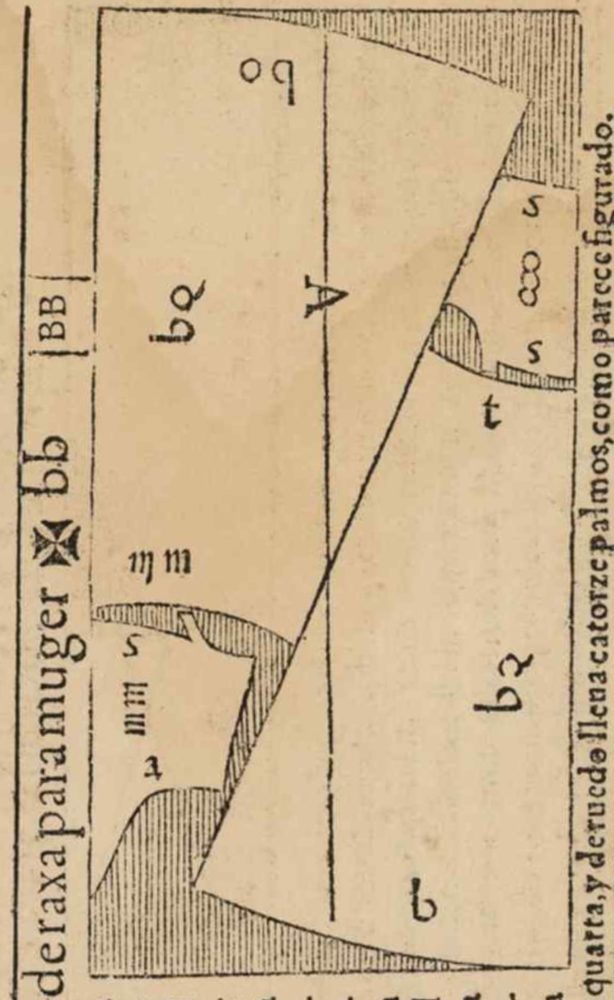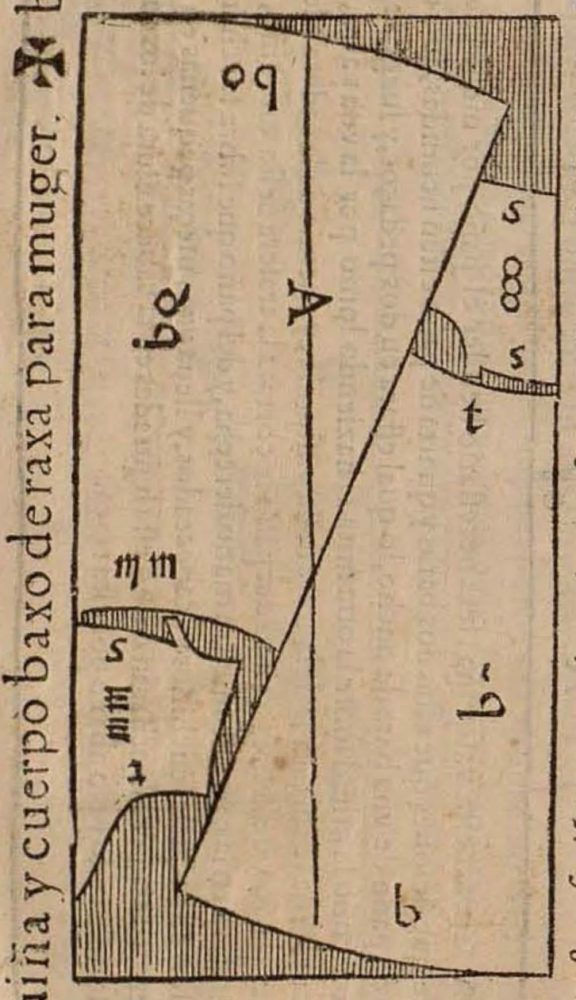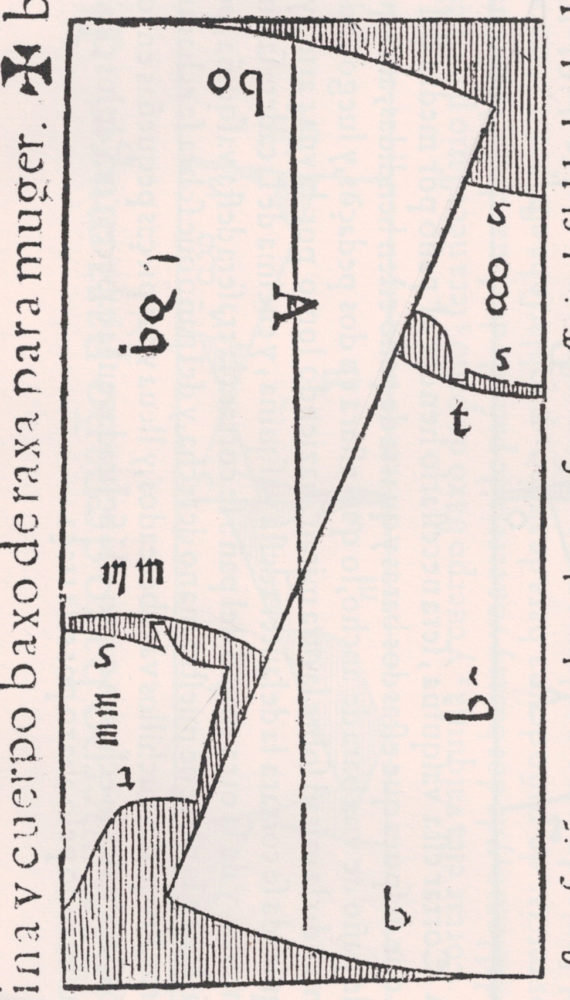It’s a trap or multiple errors?
One of the first things we are warned about tailoring manuals is to not trust the diagrams- meaning the line art. Usually this is because the hand drawn manuals are very rough sketches indeed, and the printed works rely on being able to fit the diagram within set dimensions for the press.
I have digitised copies of the 1580 and 1589 books by Alcega (in my timeline of manuals) as well as the printed and translated physical copy. It’s very interesting to compare them side by side. Clearly the engraving was reused.



This diagram is actually reasonably well proportioned given the measurements- the length of the outline is nearly double the width and the indicated length is 2 baras, the width after folding is one baras.
The waist of the skirt front (lower right) is close to the indicated width of 1/3 of a baras (t) as it’s a little shy of 1/3 the width of the diagram. The length of the skirt front is pretty close to 1 1/4 baras (bq) by eye. And the skirt back waist width is a little shy of half the width- mm is iiim, or three finger widths narrower than 1/2 of a baras (m.)
The text explains the skirt is 1 1/4 baras high and the hem is 14 palmos- or quartos (q, or 1/4.) This would be 7 hand spans for a side front and side back.
I redrew the pattern as it appears in the recent reprint and translation and I wound up with the hem measurements as ob for the half back hem and sb for the half front hem. Added together it’s very close to 14 palmos/q after all!
That might reflect the kind of rounding done on the fabric which is something I do with my manual. I ignore pi and round to 3 and 6 for circular skirts. As fabric is not paper and we need to turn for hems it doesn’t make much difference, especially as I also then use a hand width (across the base of my fingers) for turnings and use the barest turn under for the hem (I’ll do a proper article about this as it’s wonderfully freeing.)
So what might be going on?
Clearly the second edition has a few more skipped areas, compared to the first. The most obvious is the nearly missing q of the bq length of the skirt front (lower right again.) And if you have the recent reprint of the 1589 book, you’ll find there is an additional error following the bq of the back skirt panel (upper left). Quite a big error as it looks like part of the letter j.
So it’s possible there are two more errors, but at the engraving stage. It’s possible the engraver flipped ob (baras minus 1/8) into bo (baras plus 1/8) for the back skirt hem, but they would have also missed entirely the s of sb (baras minus 1/6)the skirt front hem winds up close to being.
So two engraving errors and errors from using the potentially worn engravings are all possible here in a single diagram.
The question is were they left in deliberately like a trap street so that if the book is copied it’s easy to prove? Or accidentally- that is a lot to miss- or just left because a tailor of the time was supposed to know these all off by heart and they would just know where to annotate if being used in the workshop for journeymen.
Of interest is just how much compromise had to be made in the hem of these garments based on increasingly narrower and patterned fabric, and these too were memorised.
Not only are the side pieces increasingly broken up into smaller and overlapping pieces, but the hems get a little narrower. The waists rarely get narrower, usually by a few finger widths.
Even the above pattern is a compromise, but in height. The preferred length for both vasquina and saya skirt fronts is 1 1/2 baras (bm.) At this time anyway.
I’ve got myself a project from more than 40 years before these were printed but these and the hand written masterpiece books are all helping me use one of the most complicated fabrics I’ve ever bought.
I can’t use any of the extant works as they are but because all of them round to fairly large units of measurement it’s helping me figure out what is likely to have come before. And it all works in to my modular system- this is a much bigger work that I’ll also break up and publish as an article so that my own manual becomes much easier to use, and to ignore. The point of it is to be modular so that means being able to mix in modern patterning and any of the many systems and patterns.